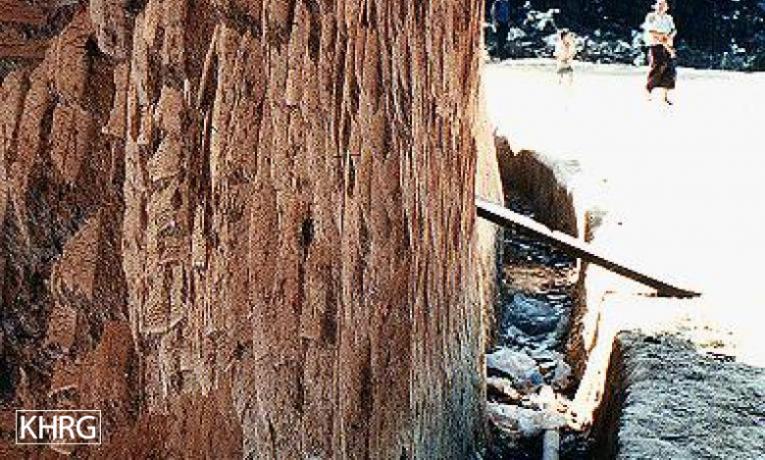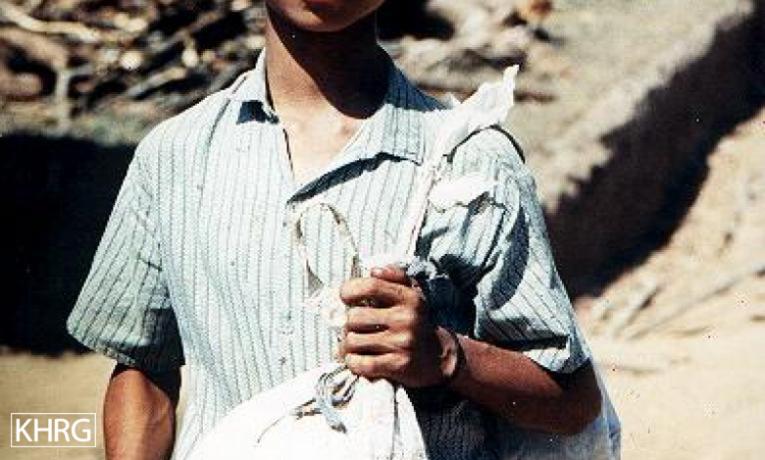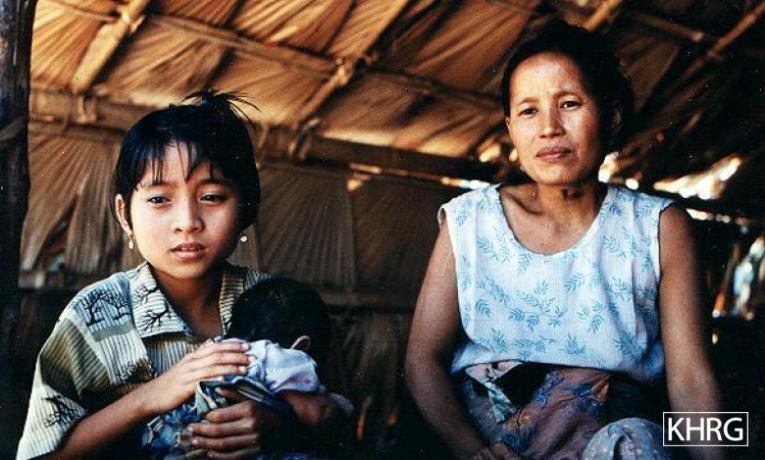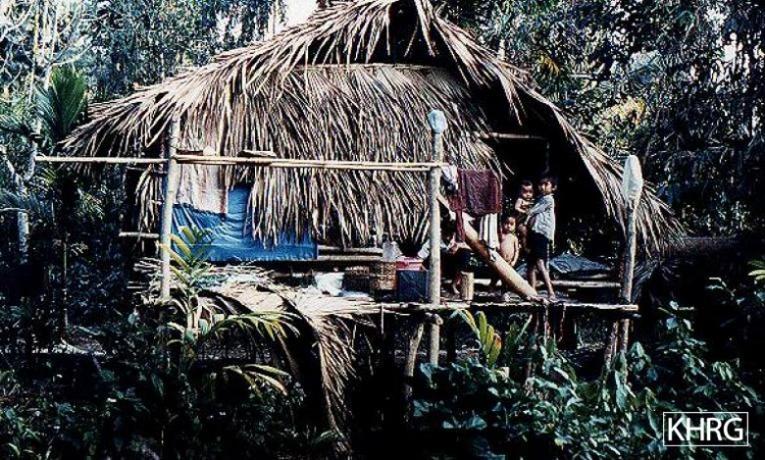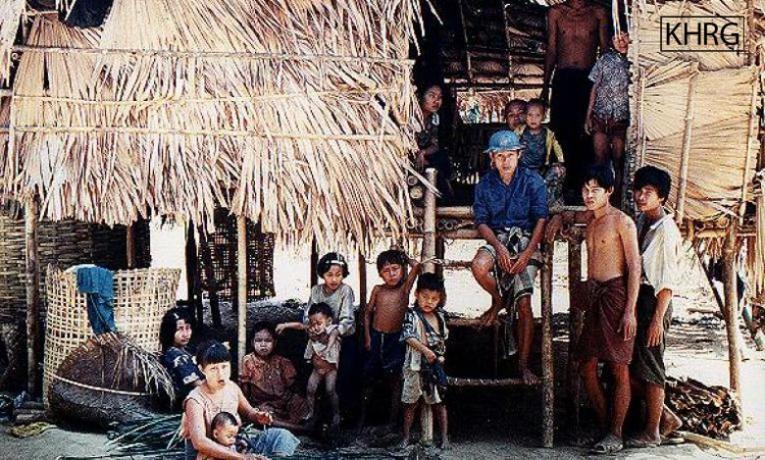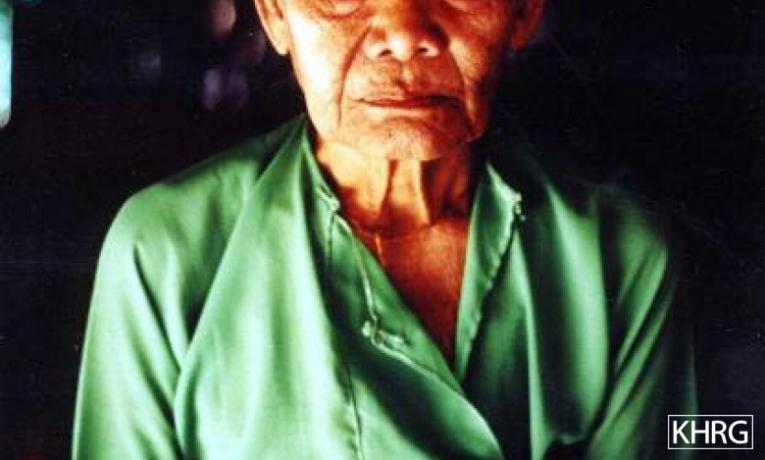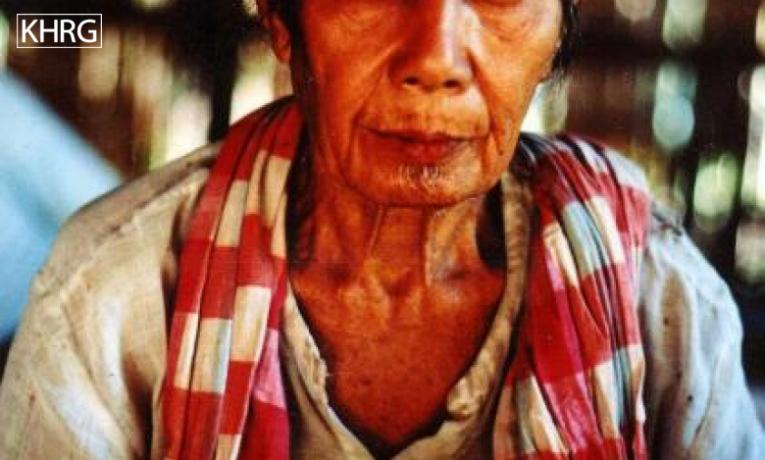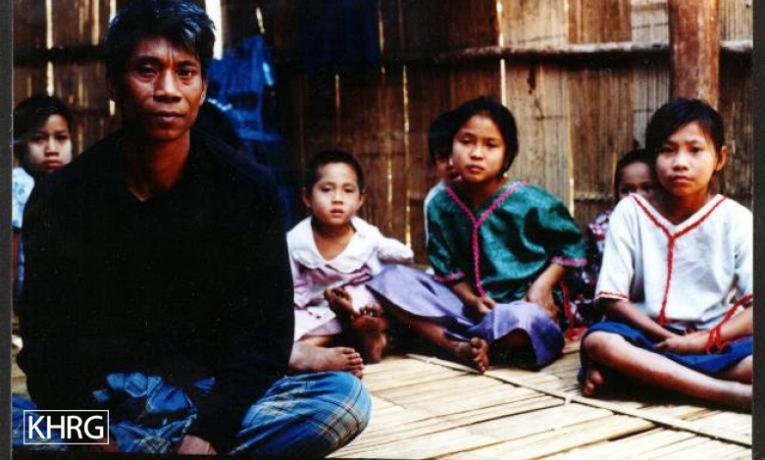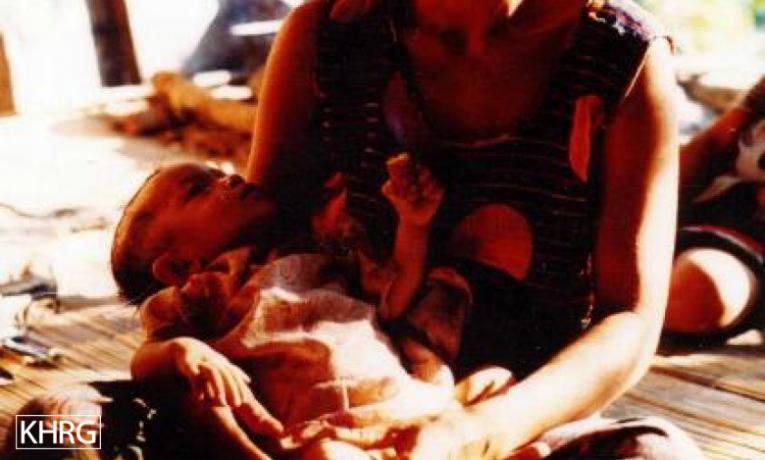This document gives descriptions for Photo Set 97-A, including Dooplaya District before the current offensive, Karenni forced relocations, attacks on Karen and Karenni refugee camps in Thailand, free-fire zones in Tenasserim Division, attacks on Karen villages in the far south, refugees from the current Dooplaya and Tenasserim offensives, and some others.
Peoples’ names given here correspond to those used in the reports; names which have been changed to protect people are enclosed in quotes. Some details have been omitted from the photo descriptions to protect the people involved. These photos may be used in any way to help the people of Burma.
Some abbreviations used in the photo descriptions:
SLORC = State Law & Order Restoration Council, Burma’s military junta
DKBA = Democratic Kayin (Karen) Buddhist Army, Karen group allied to SLORC
KNU = Karen National Union, main Karen opposition organization
KNLA = Karen National Liberation Army, army of the KNU
KNPP = Karenni National Progressive Party, Karenni organization which is still fighting SLORC.
Even before SLORC’s current mass offensive began against the Karen in Tenasserim Division, they were working on a campaign to forcibly relocate almost every village between the Tenasserim River and the coastal plains to the west. The campaign began in September 1996, and to date at least 40 villages have been ordered to move to forced relocation sites for forced labour road construction, as SLORC constructs several roads into the area so that they can establish new military camps to control the civilian population. Most of the villagers have fled into the bush rather than go to the relocation sites, so SLORC has burned part or all of at least 9 villages throughout the region and has shot many villagers on sight in these new ‘free-fire zones’. Most villagers continue to hide in the bush surrounding their destroyed villages, but hundreds of villagers fled from the areas to KNU-controlled territory along the Tenasserim River to the east. SLORC then commenced its mass offensive against the Tenasserim River valley in February 1997, forcing many of these internally displaced people to flee again. The situation in the free-fire zones continues. Research by overseas journalists indicates that part of the reason for creation of these free-fire zones is that SLORC is seeking money from the ‘World Conservation Society’ and the Smithsonian Institute, both American NGO’s who claim to want to save the environment by helping SLORC set up a ‘nature reserve’ in the area so the junta can make money from ‘ecotourism’. Ironically, the current SLORC offensive has already overrun the KNU’s Kaser Doh wildlife sanctuary, which SLORC will probably now open to logging. All photos relate to the report "Free-Fire Zones in Southern Tenasserim" (‘Tenasserim’).
Photos #40,41: Some of the houses burned and destroyed in Wah Thu Lo village as SLORC tried to force the villagers to move to Ka Pyaw relocation site to do forced labour on the Boke-Ka Pyaw-Kyay Nan Daing motor road. [Photos: KHRG]
Photo #42: Destroyed houses in Ka Weh village. Where SLORC did not burn the houses, the soldiers ordered the villagers to tear apart their own homes "or else we’ll come and burn everything". [Photo: KHRG]
Photo #43: One of the nicest houses in Bler Hta village, all made of hardwood, now destroyed by SLORC order. The owners had to flee to live in hiding in a shelter in the forest, and had nowhere to move their furniture. [Photo: KHRG]
Photo# 44: Destroyed houses, Maw Pleh village. [Photo: KHRG]
Photo #45: House burned by SLORC, Wah Lo village. Most of this village was burned. [Photo: KHRG]
Photo #48: A man with a family of his own stands with his 98-year-old father in front of what used to be their house, until SLORC burned it as well as their livestock sheds. They now share a 10-foot by 15-foot dirt-floored shelter among the trees with an extended family of 16 people. If SLORC finds them there they will be shot on sight. [Photo: KHRG]
Photo #49: Young boy in front of what used to be his house until SLORC burned almost all 60 houses in Ka Weh village. [Photo: KHRG]
Photo #50: Destroyed houses, Ka Weh village. [Photo: KHRG]
Photo #51: Ta Po Kee village school, now abandoned - many villagers are in hiding in the area, but if they tried to run a school the SLORC would burn the entire village and shoot them on sight. [Photo: KHRG]
Photo #52: Abandoned primary school, Maw Pleh village. All the houses in the village were destroyed by SLORC. [Photo: KHRG]
Photo #53: A SLORC ‘government’ middle school in Noh Aw village - until the village was ordered to move, the ‘government’ teacher fled, and SLORC troops came and burned the school and much of the village. Though it was a ‘government’ school, the villagers had to pay for the construction, build it, pay for and support the teacher, and pay for all school supplies. This is normal - all SLORC does is send a teacher, and then burn your school. [Photo: KHRG]
Photo #54: Villagers in their village, which has now been burned and destroyed by SLORC. They live in hiding in the surrounding forests, coming back to their village when SLORC patrols are not nearby to salvage what they can.
Photo #55: Villagers heading home from forced labour on the Boke-Ka Pyaw-Kyay Nan Daing road near Boke while their shift of replacements head from the village to the worksite for the next shift, carrying along all their food and tools. [Photo: KHRG]
Photos #56,57: Villagers heading home from forced labour on the Boke-Ka Pyaw-Kyay Nan Daing road near Boke while their shift of replacements head from the village to the worksite for the next shift, carrying along all their food and tools. [Photo: KHRG]
Photos #58,59: The Boke-Ka Pyaw-Kyay Nan Daing forced labour road near Boke. All work on the road, from hacking out the hillside to smoothing and ditch-digging, must be done by hand by the villagers, using tools no more sophisticated than their hoes. In the first photo a road-smoothing tool can be seen on the road. The second photo gives an idea of the shoddy engineering when road construction is supervised by Army officers - all of this will be washed away by the first rains, and then the villagers will be forced to build it again. When asked whether his troops would destroy the road to cut SLORC access, a KNLA officer replied, "We won’t have to. Look at this road - one rain and it will be gone." [Photos: KHRG]
Photo #60: Forced-labour bridge on the Boke-Ka Pyaw-Kyay Nan Daing road. Rainy season will immediately destroy this bridge. [Photo: KHRG]
Photo #61: The forced labour road cutting through the centre of Ka Pyaw village. The huts further down on the right have been built by villagers from other places forced to move to Ka Pyaw to build the road. The bed of ashes in the left foreground used to be the village rice-mill, but SLORC said it stood in the way of the road and ordered it burned down. [Photo: KHRG]
Photos #62,63: Hillside hewn by hand to make the road. [Photos: KHRG]
Photo #64: The huts of people forced to relocate to the side of the Boke-Ka Pyaw-Kyay Nan Daing road. They are then used on a daily basis as forced labour to build the road. [Photo: KHRG]
Photos #65-67: The men of a Burman village on their way to do a shift of forced labour on the Boke-Ka Pyaw-Kyay Nan Daing road, together with all their food. They had already been walking 5-6 hours, and still had close to an hour to walk to get to the worksite, where they would have to work for 5 days. The second and third photos show the eldest and youngest of this particular group: a 60-year-old man and a 17-year-old boy. [Photos: KHRG]
Photo #68: "Sein Myint", age 12 (right) and his 16-year-old friend (left) just before boarding a boat to go for 15 days of forced labour building the T’Gu-Ta Po Hta road. One person from every house in their village has to go on the boat, which the village headman had to arrange and pay for to send them to the labour. "Sein Myint", an orphan, has to go because his 30-year-old sister (who has a 4-year-old of her own) is too sick to go. Just 2 weeks earlier, he’d already done 12 days of forced labour digging ditches along the road. He has no chance to go to school. [Photo: KHRG]
Photo #69: The other villagers from "Sein Myint"’s village, all Burmans, pile onto the boat to go for forced labour. [Photo: KHRG]
Photos #70,71: Karen villagers forced to relocate and build huts alongside the Boke-Ka Pyaw-Kyay Nan Daing road, where they must do constant shifts of forced labour. [Photo: KHRG]
Photos #72-74: Karen villagers hiding in the free-fire zones rather than go to the relocation sites. [Photos: KHRG]
Photos #75-78: Faces of the internally displaced: some of the villagers interviewed by KHRG as they were fleeing the free-fire zones and forced labour. The elderly man wearing the red and white cloth is aged 77, yet he had been arrested and beaten by the SLORC military just 2 months before his village was ordered to move, because they suspected that his son was a Karen soldier. [Photos: KHRG]
Photo #79: 72-year-old monk who fled his temple in one of the free-fire zones to KNU-held territory together with the 2 young nuns from his temple. The monks in his area were ordered to move to SLORC places apart from the villagers, but he refused to go: "We always hear and see things and this hurts our hearts, so I did not want to stay there anymore. Every time the Burmese come up they kill 2 or 3 people, 2, 3, or 4 more, and so on. Whether you carry a gun or not." [Photo: KHRG]
Photos #80,81: Mother and child (photo #80 shows them with the rest of their family) that fled the free-fire zone to KNU-held territory and built a small shelter in the forest. Her baby son had been sick for 3 weeks, could no longer eat and appeared as though he would die soon. They had no medicine and only the food they could carry along with their 3 children. [Photo: KHRG]
Photo #82: Karen woman, age 20, whose village (Aw Pu) was ordered to move. Her husband, age 22, was then seen in his field by SLORC soldiers - he tried to run, and they shot him dead on sight. She then fled the free-fire zone though she was 9 months pregnant, and 3 weeks after the murder of her husband she gave birth to their second child, a son. When this photo was taken the baby was just over a month old, and she was living in hiding in KNU territory which has since been overrun by SLORC. [Photo: KHRG]
Photo #83: Old women who fled the villages where they have lived all their lives, now destroyed, to become internally displaced. SLORC has since overrun the village where this photo was taken. [Photo: KHRG]

































